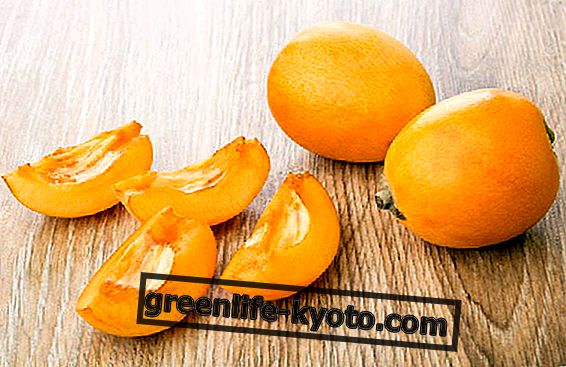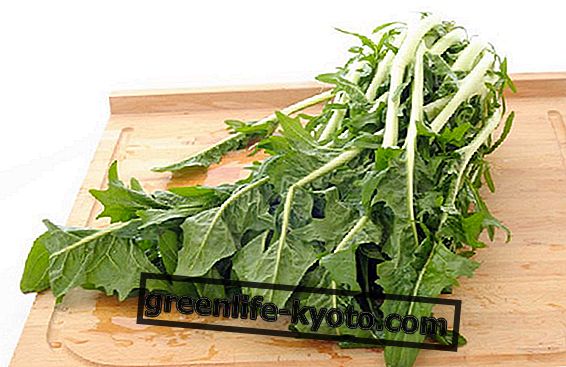
Between May and June the season is sweet and fascinating. The scorching heat has not arrived yet, the air is not as hot as in the summer and in the evening it is indeed wonderfully fresh and fragrant, quilted with fireflies and other insects that frequent the night still dewy.
The gardens, the vegetable gardens, the parks and the wild lands are full of herbs, shrubs and trees intent on ejecting new life to mature later under the heat of the summer months.
The eye of the curious and the expert are able at this time to find interesting fruits and flowers even where they are normally not expected.
Two plants, used in public or private gardens as ornament or hedge, give interesting fruits in particular: the first is the magnificent tree with the intriguing purple burgundy color called "amolo" or "marusticano" ; the other is the feijoa, a seemingly anonymous bushy tree if it weren't for the showy red stamens of its flowers.
The Feijoa plant
In these preestive months we can notice a shrub among the hedges of gardens and courtyards that in May begins to bloom in red, with showy flowers, in contrast with the small emerald green leaves (sage green the younger ones).
With the right pruning, it can grow up to about ten meters high and produce fruit regularly. It is an evergreen native to Brazil, and its name is linked to that of a 700 botanist, a certain Feijò.
The whole plant has various uses: even the seeds and leaves are used to extract extracts used in herbal medicine . After flowering in our gardens in May, it will begin to bear fruit in October, for a month, during which the ripe fruits will fall to the ground, ready to be picked and enjoyed.
Even the flowers are edible: the firmer and fleshy petals are well suited to fruit salads and salads with their flavor reminiscent of cinnamon.

The fruit of the Feijoa: sin of gluttony
The taste of feijoa fruits is somewhat intriguing as a description: it is defined as a mixture of pineapple, strawberry, guava, with a hint of mint .
If the maturation continues, it also begins to acquire a flavor similar to that of the banana and the already strong tropical scent increases further. The fruit is an oblong berry of about five centimeters, which remains green even when fully ripe and is therefore not very showy. You can cut it in two by consuming the pulp with a spoon or by peeling it and eating it in one bite.
It is a fruit low in calories and low in fat, so it is excellent for those on a slimming diet. It is also rich in vitamin C , followed by B9, B5, B6 and K. It is a good source of manganese, potassium, magnesium and phosphorus.
Its antioxidant property is known and its folic acid content makes it ideal for pregnant women. Besides that, it has a good fiber content, and is also renowned as a digestive and antibacterial.

The plant of Amolo
Also called mirabolano (from the Greek μύρον-βάλανος "scented acorn") or marusticano, the amol is a tree of the genus Prunus widely used in garden design and in landscape architecture due to the intriguing intensity of color of leaves and fruits of purple varieties.
It is native to the Caucasus and Central Asia ; in the wild it has a shrubby growth but is generally given a tree shape. It was imported for ornamental purposes in the United States, but somehow managed to grow older and grow free.
It blooms rather early, with small white or pale pink flowers . In the period between May and June we can see the spectacle of the starch full of unripe fruits and therefore hard and harsh; only at the end of summer will these succulent delicacies be ready.
Our French cousins, great lovers of all varieties of plums and their jams, have cultivations of starch scattered throughout the countryside.

The fruit of the Amolo
The fruit of the amol is a close relative of the plum although in full maturity it is difficult to distinguish from a cherry, and as the latter very attractive.
It is a drupe of 2-3 centimeters in diameter, which retains a bitter taste almost to the last stage of maturation, in which it ends up sweetening, becoming soft and succulent, vaguely remembering the taste of mirabelles while retaining a bit of harshness.
However, even when it is not fully ripe, the hard fruit is consumed due to its digestive qualities . Compared to plums and plums of Prunus domesticus, it is rich in tannins , flavonoids and vitamin C.
It produces a liqueur ( mirabolano wine ) and a very aromatic and beautiful jam, but it is also excellent as an ice cream (used in particular in the southern United States) and caramelized on fruit desserts instead of cherries. Our parks are full of them and no one ever reaps the fruits ... feel free to taste a couple!

Recipes to taste
Now let's see how to use these two fruits in the kitchen to make tasty foods.
In Sicily, Calabria and Puglia you can buy feijoa jams, but it is a fairly simple recipe: they serve fruits of feijoa peeled and cut into pieces, sugar (at least ¾ of the weight of the fruit and no more than 1 time and ¼ of the same), a teaspoon of salt.
All the ingredients must be put together to boil over a low heat until the whole reaches the desired degree of density, after which we will proceed to put everything in glass jars previously sterilized.
Another way to taste the feijoa is to crush it on a plate with a little lemon or lime, as is done with a banana, adding perhaps peeled almonds.
And the amol? Why not syrup right along with the feijoa? Then peel the feijoa fruits (not completely ripe) and place them in jars together with the whole amolian fruits, not deprived of the stone.
Add a prepared syrup by dissolving brown sugar in water and placing it in jars for about a quarter of the volume. Prepare a large pot by placing cloth rags on the bottom and wrapping the jars that will be inserted inside and covered with water.
Boil the water for 2 hours and then remove the still-warming jars, turn them upside down immediately so that the cap is the base. In this way we will obtain the vacuum. When they are cooled we will turn the jars and label them. They will last more than a year and we will be able to eat them at any time of the year.













